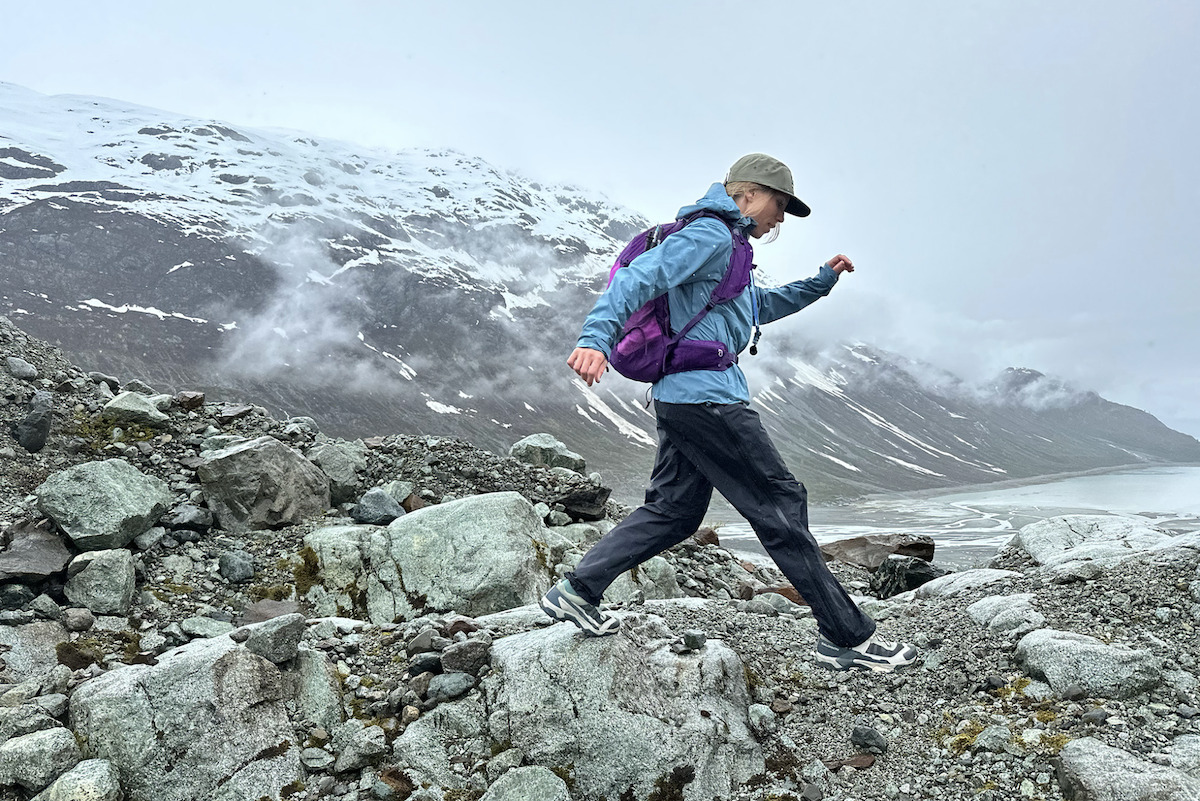

Price: $189
Weight: 11.3 oz. (women’s)
Waterproofing: 3L HydroWall
Pit zips?: Yes
What we like: Hardshell-like protection and three-layer breathability for under $200.
What we don’t: The hood is a little shallow; pocket placement could use some adjustment.
See the Women's XeroCloud 3L Rain Jacket See the Men's XeroCloud 3L Rain Jacket
Quality 3-layer rain shells don’t come cheap, which is one of the biggest selling points of the REI Co-op XeroCloud 3L. Released for spring 2025, the XeroCloud undercuts most 3-layer competitors in price while packing in a healthy dose of comfort and a full feature set. After testing the jacket on a very wet trip to Alaska, I’m happy to report that it exceeded my expectations in most areas. I did come away with a couple of small complaints regarding the hood and storage layout, but overall, the XeroCloud handily outperformed its price tag. Below, I break down how the women’s XeroCloud 3L performed in testing. To see how it stacks up to the competition, check out our articles on the best rain jackets and best women’s rain jackets.
Using REI’s 3-layer HydroWall waterproof membrane, a durable water-repellent (DWR) finish, and full seam sealing, the XeroCloud 3L Rain Jacket packs in solid water and wind protection. For reference, I tested the piece during an eight-day trip to Alaska, where it rained at least some amount every day. Conditions ranged from a light mist to deluges, but the sun rarely made an appearance. Impressively, the XeroCloud confidently fended off moisture with no signs of wetting out for five days. On day six, during a particularly wet and exposed hike, the exterior became noticeably saturated. While my partner’s Gore-Tex-equipped jacket looked similarly drippy, his midlayer emerged entirely dry. By contrast, my midlayer was damp in a couple of spots—most noticeably at the cuffs and beneath the XeroCloud’s main zipper. Upon returning home, I revived the jacket’s DWR coating with a spray-on treatment (Nikwax’s TX.Direct), and it subsequently passed a shower test without issue.
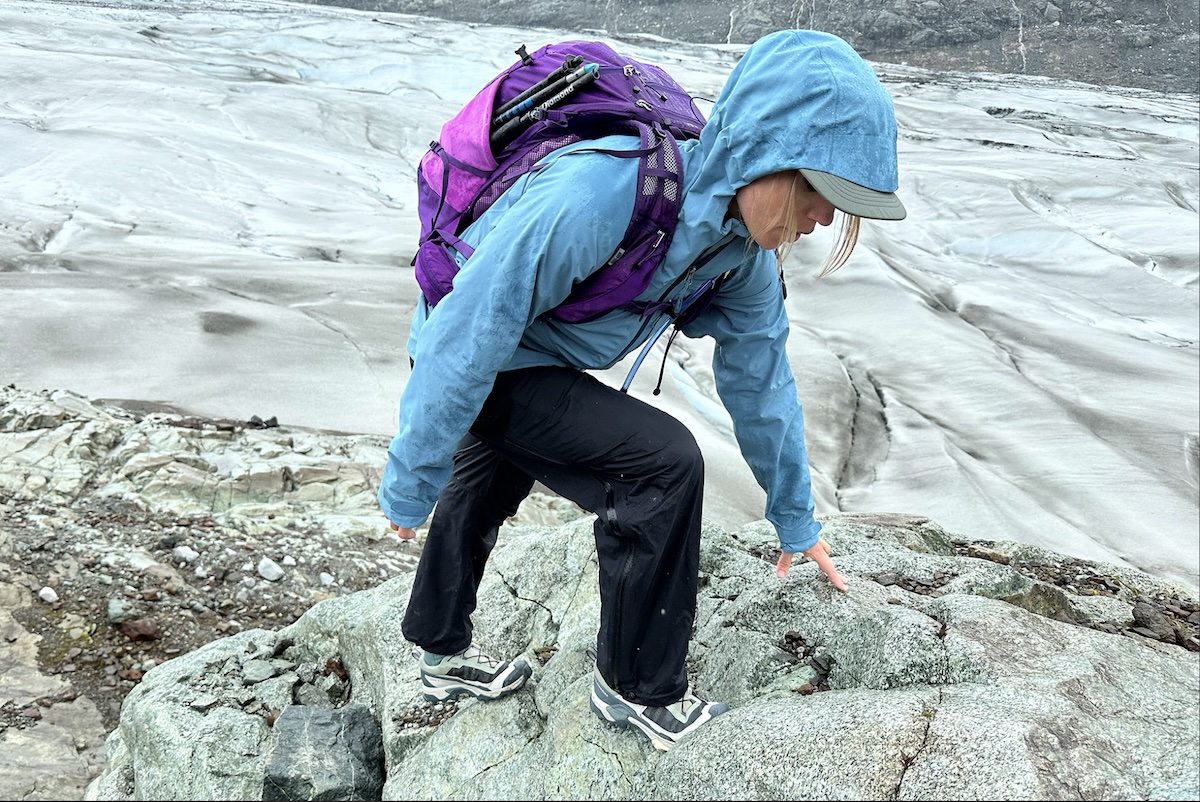
In terms of protective features, the XeroCloud comes nicely appointed. For starters, the cuffs feature hook-and-loop adjustments that made them easy to secure over my liner gloves when hiking or under my waterproof paddling gloves when kayaking. The cuffs themselves extend over the back of my hand, offering great coverage and protection on cold and drippy outings. Additionally, there’s a single hem drawcord for cinching the waist, along with a toggle at the back of the hood for securing it in storms or high winds. While I found the hood to be functional overall, it’s a little shallow, which resulted in moisture dripping into my eyes while hiking. In my experience, it’s best to pair the hood with a ballcap, especially in driving rain.
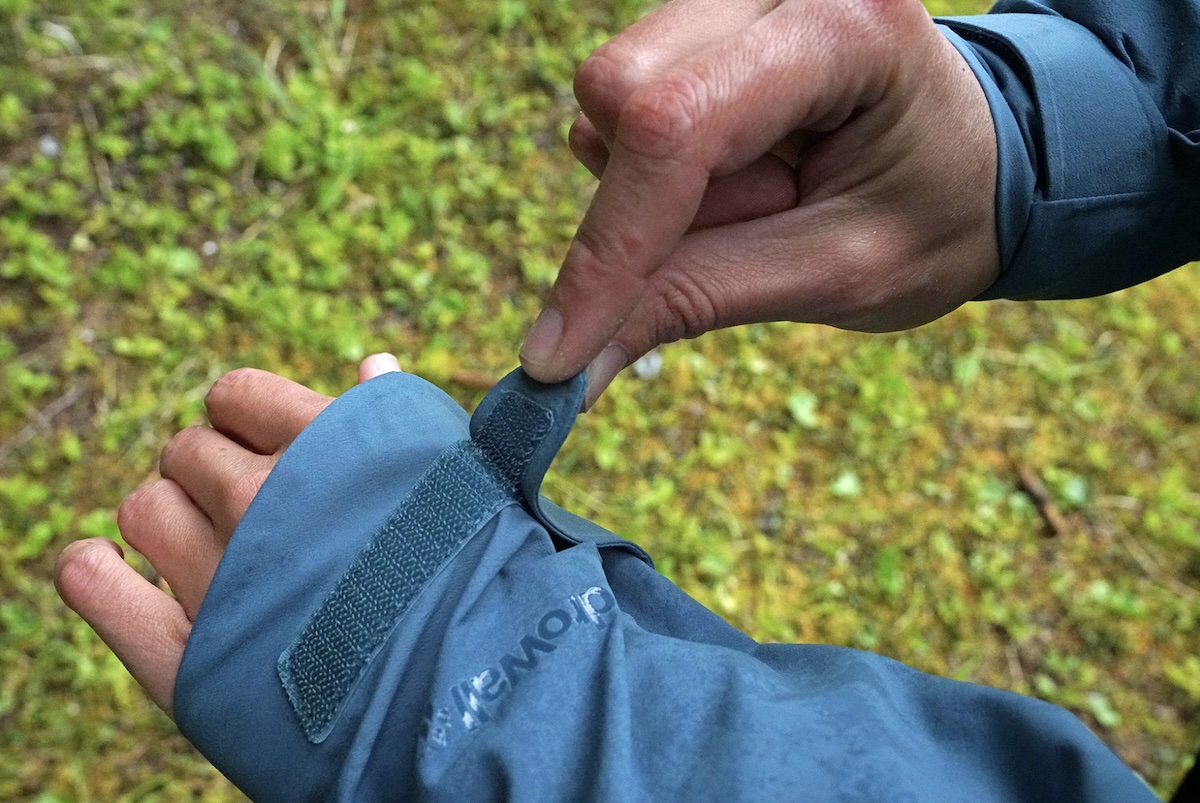
Weatherproofing and breathability are inherently at odds, but I feel REI did a nice job balancing the two with the XeroCloud. The 3-layer HydroWall membrane did a great job keeping me comfortable in Alaska. Even when I worked up a sweat while hiking or kayaking, the interior never grew sticky or clammy. I should note that temperatures were very mild, only reaching into the upper 50s Fahrenheit with very little sunlight for eight days straight, but the relatively thin and stretchy face fabric bodes well for warm weather. The jacket also comes with pit zips for dumping excess heat. I didn’t need to use them very often, but they are easy to operate, generously sized, and protected by fabric flaps to guard against moisture.
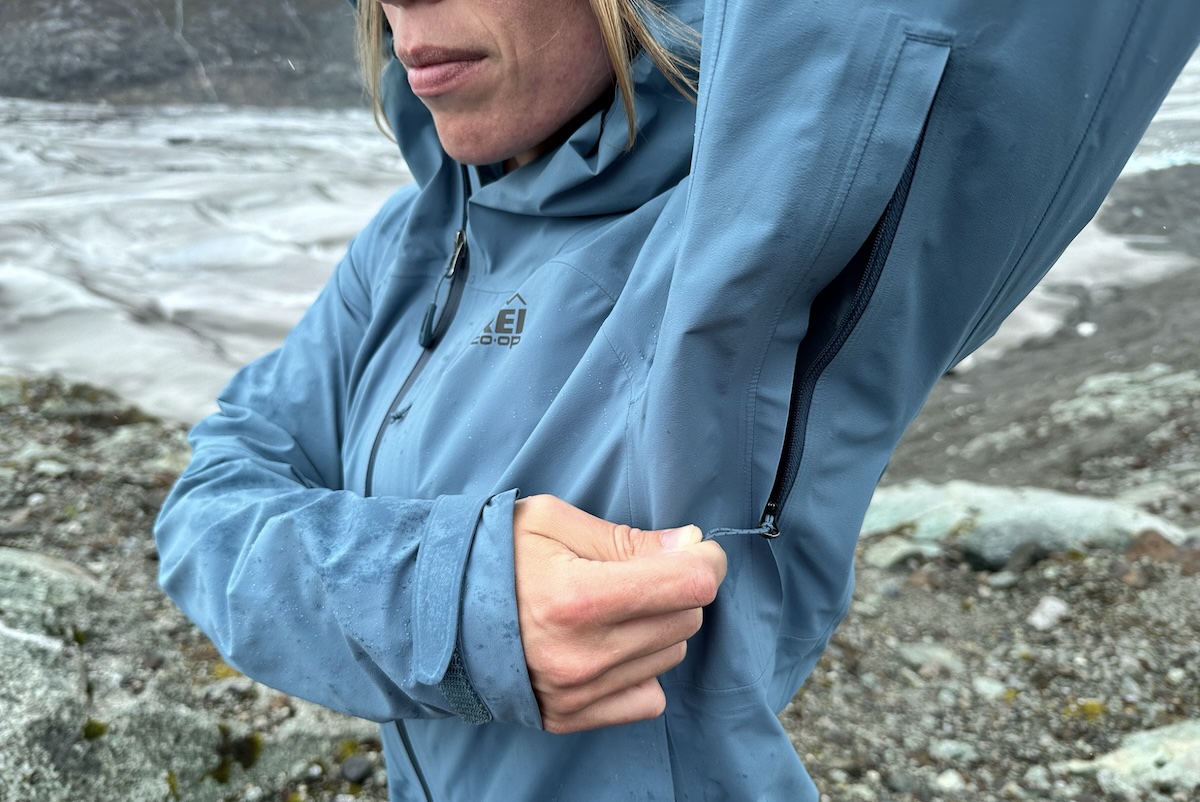
The XeroCloud exceeded my expectations in the comfort department. First, the jersey backer is noticeably soft and supple against bare skin, allowing me to wear the jacket over a hiking t-shirt without any stickiness or clamminess when working up a sweat. There’s also a good amount of stretch to the fabric, which resulted in unrestricted mobility—I was able to hike and kayak without issue, even with several layers underneath on cold days. Finally, while not technically a comfort-related consideration, the fabric is noticeably quieter and less crinkly than what you get with many Gore-Tex-equipped shells. While this may not be a selling point on its own, I appreciated being able to hold a conversation when wearing the hood.
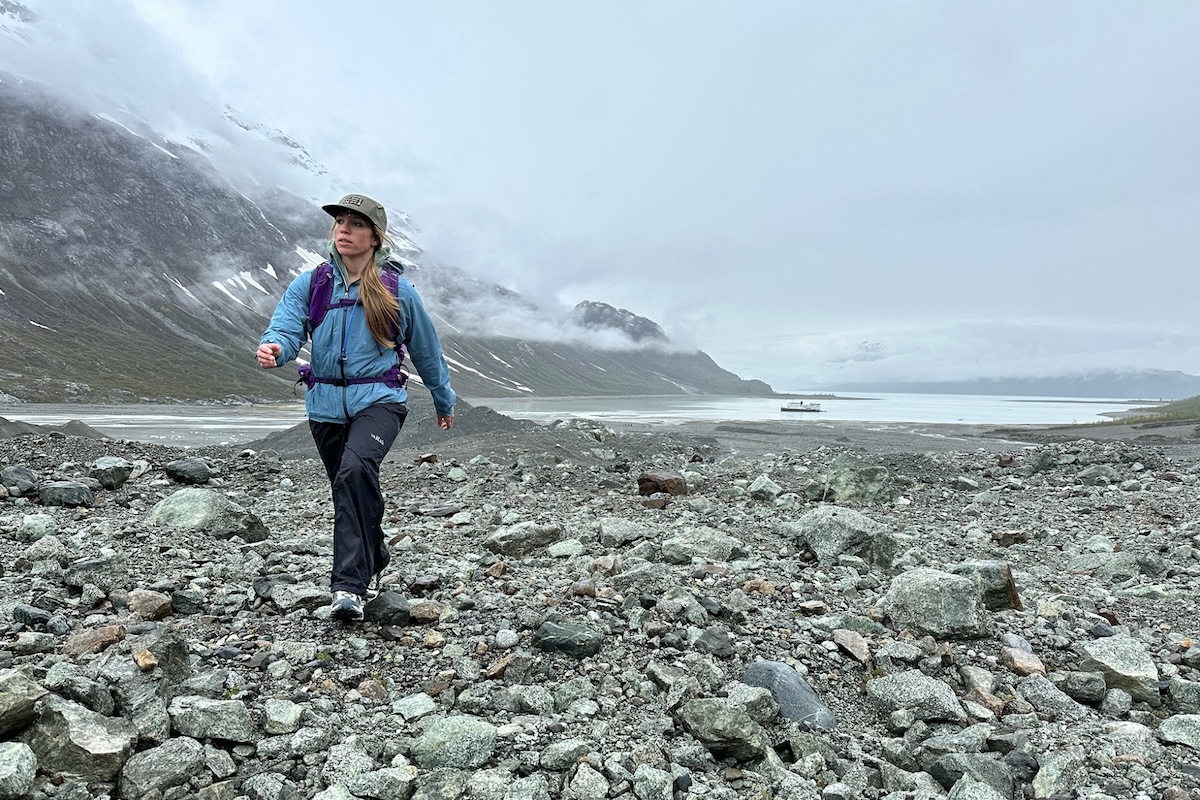
At 11.3 ounces for the women’s version, the REI XeroCloud 3L isn’t the lightest rain jacket on the market, but it stacks up competitively to similarly intentioned shells. For example, the Patagonia Torrentshell 3L, which costs around the same and features Patagonia’s in-house H2No construction, checks in heavier at 12.4 ounces. If keeping weight low is a priority, you can shave off several ounces with an ultralight piece like the Patagonia M10 Storm (9.9 oz.), but that jacket forgoes features like hand pockets and pit zips, which limits its all-around appeal. In testing, the XeroCloud went largely unnoticed throughout the day, and I have no qualms about taking it into the backcountry on multi-day trips. It helps that the jacket is pretty packable—stuffed into the left hand pocket, it’s about the size of an American football.
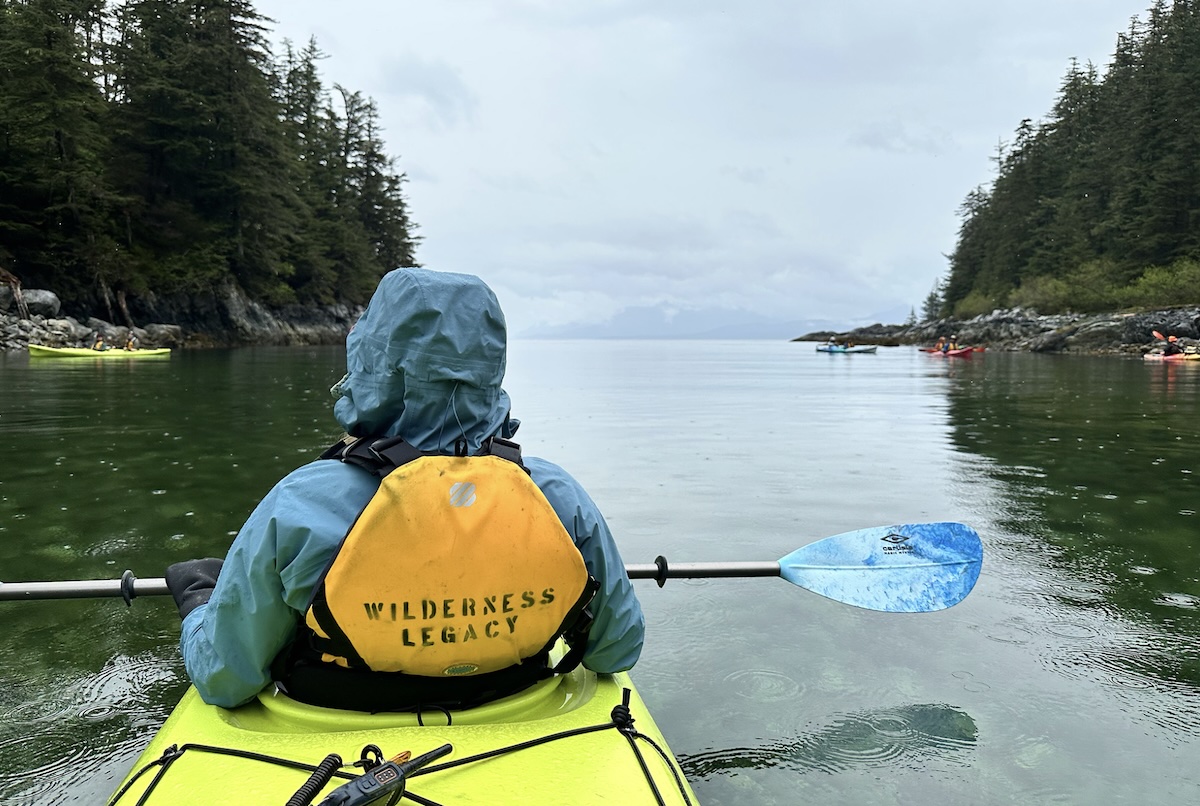
REI pieces often strike a nice balance between price and quality, and the XeroCloud 3L is a shining example. Despite undercutting many 3-layer competitors in cost, the XeroCloud is very well built overall, from the soft and stretchy fabrics to the smooth-operating zippers, quality toggles and drawcords, and full seam sealing (many budget pieces are only critically seam-sealed). In terms of fabric thickness, the XeroCloud features a fairly average 40-denier (D) construction, which is a little thinner than what you get with the Patagonia Torrentshell (50D) but plenty hardwearing for most outdoor uses and everyday wear. Finally, while mostly subjective, the XeroCloud is a sleek and good-looking jacket with a clean exterior and classy colors, and I received several compliments on my Blue Shale colorway.
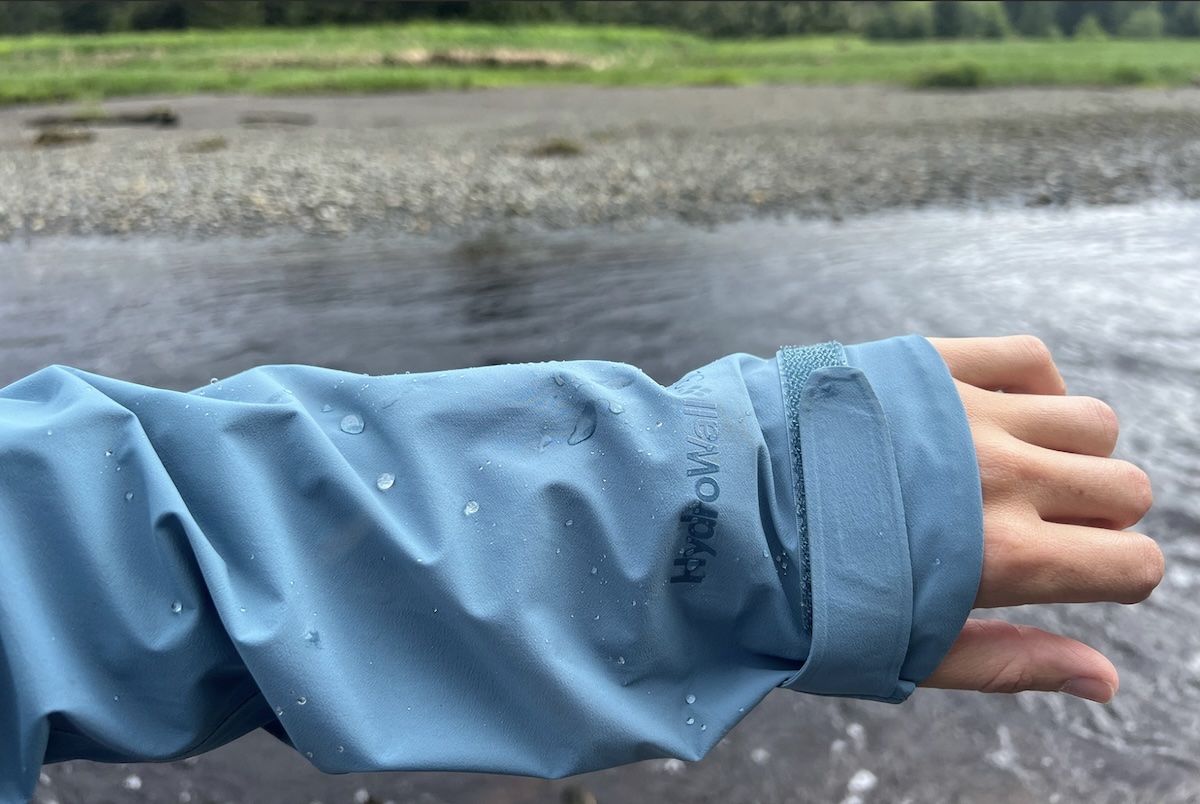
The XeroCloud’s hood is fairly basic but serviceable in most conditions. There’s a single drawcord at the back for cinching it down, which effectively keeps the hood in place, even in strong winds. REI also included a laminated visor at the front, which is intended to deflect moisture away from the face. In testing, I found the hood to be a little shallow, which resulted in rain dripping into my eyes while hiking. It wasn’t an issue in light-to-moderate precipitation, but in driving rain, I’d recommend adding a ballcap for better protection. Finally, it’s worth noting that the hood isn’t large enough to accommodate a helmet, but it’s nicely sized for non-technical uses like hiking, backpacking, and everyday wear.
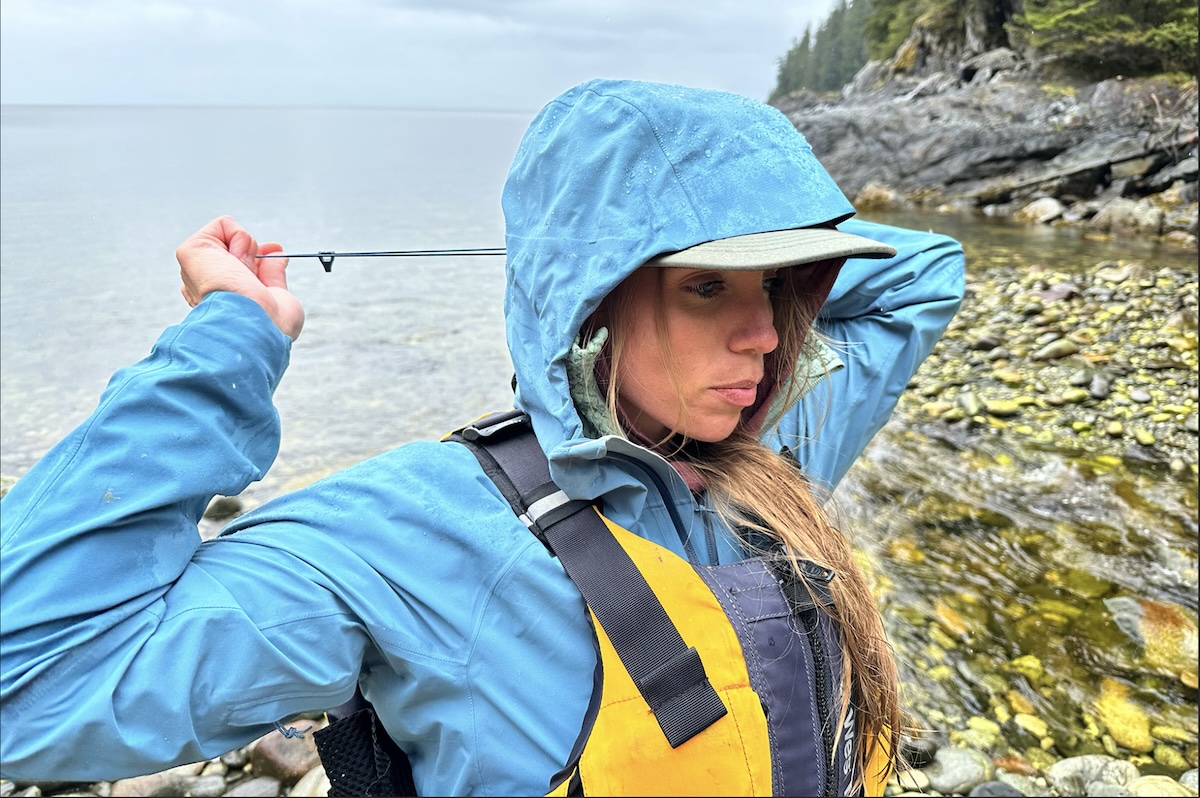
The XeroCloud 3L has a fairly standard storage layout that is comprised of two hand pockets and one exterior chest pocket. All three pockets are zippered, with fabric flaps protecting the openings from moisture. I found all three to be reliable in testing, although I wish there were an internal pocket for stashing electronics. I prefer keeping my phone closer to my body to maximize battery life and add assurance in extended precipitation, since moisture will have to make its way through more fabric before reaching the phone. My only other complaint is that the hand pockets aren’t accessible underneath a backpack hipbelt, but the upside is that they’re at a natural height for everyday use.
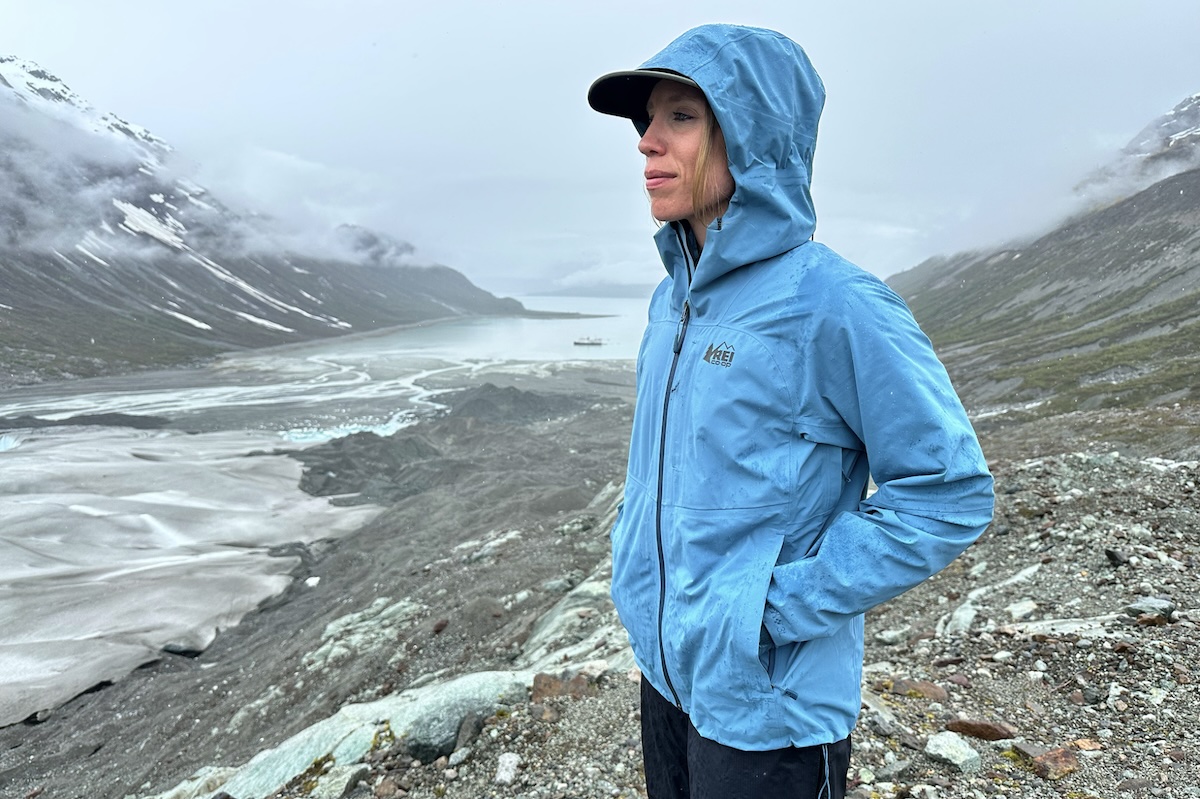
I ordered the REI Co-op XeroCloud 3L in my usual size small (it’s offered from XS to 3X for women) and found the fit to be spot-on. Conditions were chilly and damp in Alaska, so my typical layering system consisted of a lightweight wool T-shirt, a sun hoody, a thin fleece jacket (the Patagonia R1 Air), and a synthetic midlayer (the Patagonia Nano Puff Hoody). Impressively, the XeroCloud managed to accommodate my generous layering without any impact on mobility—I was able to hike and kayak with no movement restrictions. As I mentioned above, there’s a single hem drawcord for cinching the waist, and the back length of 27.25 inches was adequate for protecting my butt when sitting down or bending over.
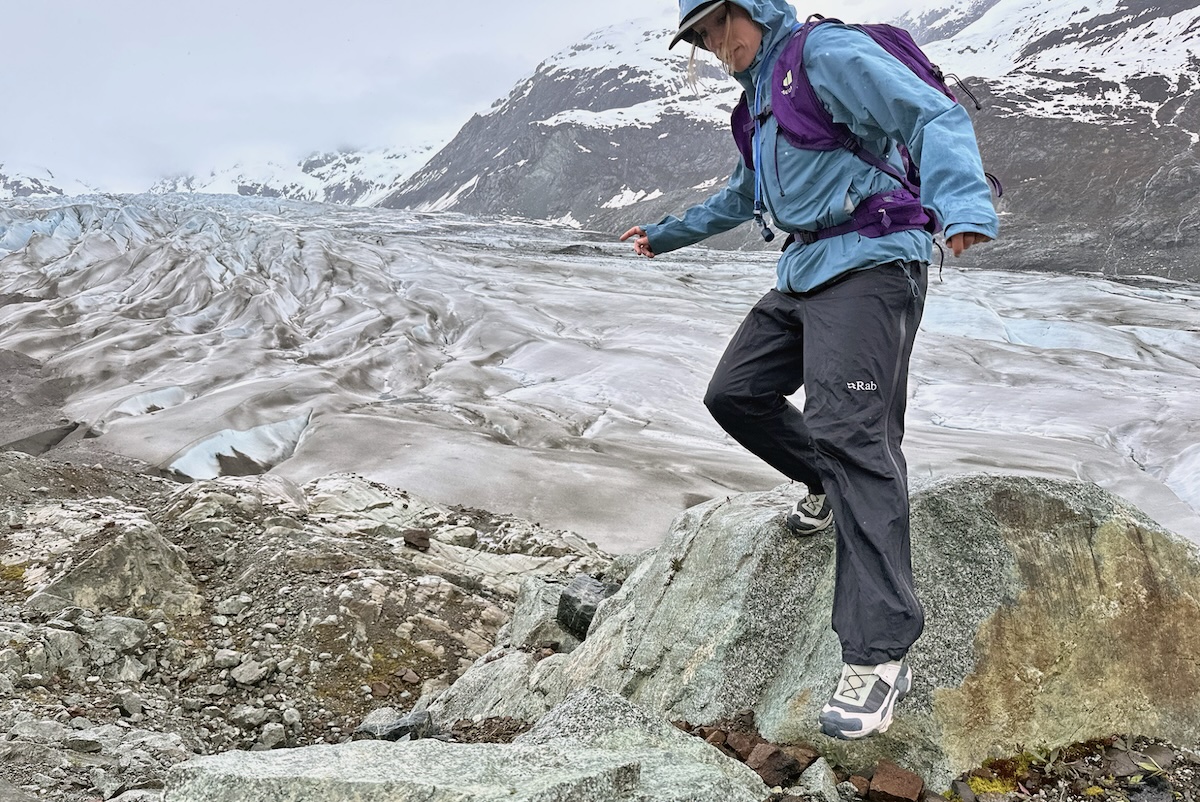
REI Co-op is at the forefront of the sustainability push within the outdoor industry, and the XeroCloud is a nice reflection of their efforts. For starters, the jacket is made with 72% recycled nylon and 28% recycled polyester. It also features a nonfluorinated DWR coating, which forgoes the use of harmful “forever chemicals” that have been linked to several health and environmental concerns. Rounding out the design, the XeroCloud contains bluesign-approved materials, indicating it’s been manufactured to minimize impact on people and the environment, and is made in a Fair Trade Certified factory. Finally, REI Co-op is certified to The Climate Label, which means they are actively funding efforts to reduce carbon emissions and supporting climate-focused initiatives around the globe.
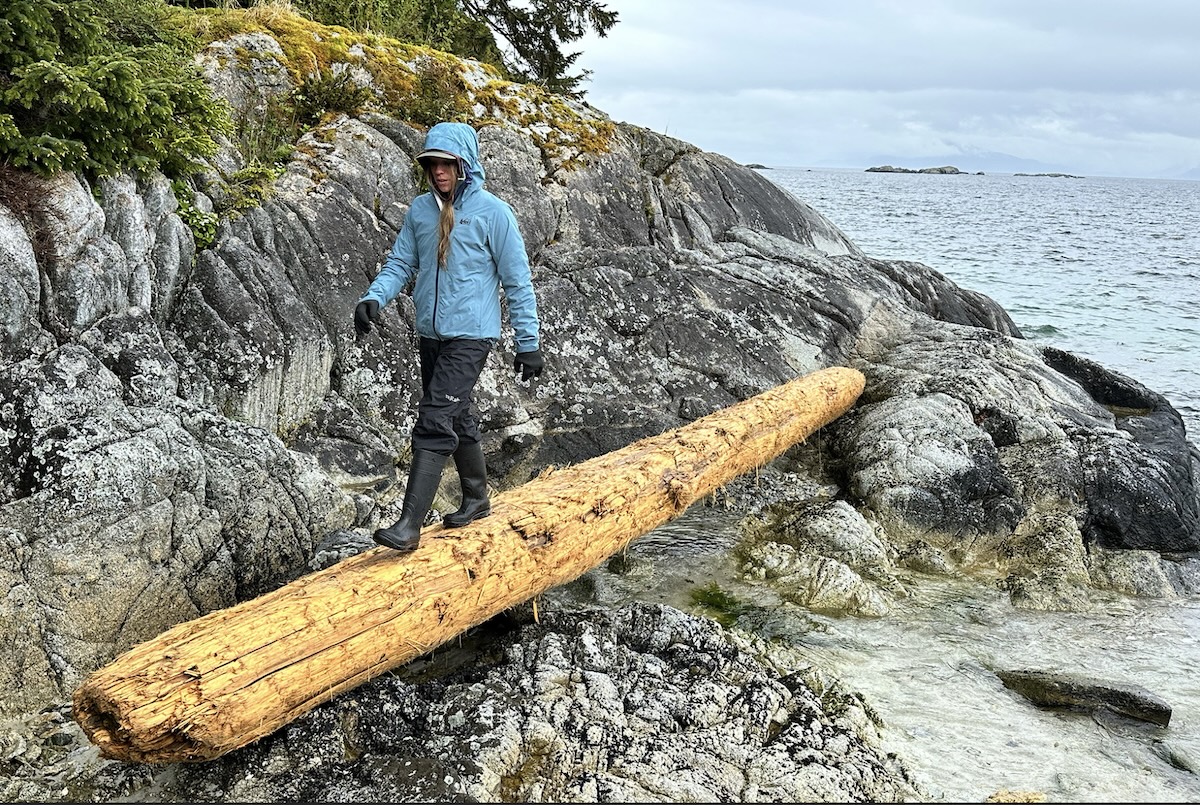
I tested the women’s XeroCloud 3L Rain Jacket for this review, and it’s also sold in a men’s version for the same price. Aside from being offered in different colorways, the men’s XeroCloud 3L is a little heavier at 13.4 ounces, comes in sizes from S to XXXL (including a few dedicated tall options), and has a longer back length (31 in.). Zooming out to the wider XeroCloud collection, REI offers matching rain pants that retail for $159 and feature the same 3-layer HydroWall construction. Finally, the XeroCloud 3L Long Rain Jacket is largely similar to the standard jacket but with extended coverage (32.75 in. for the women’s version and 35.5 in. for the men’s).
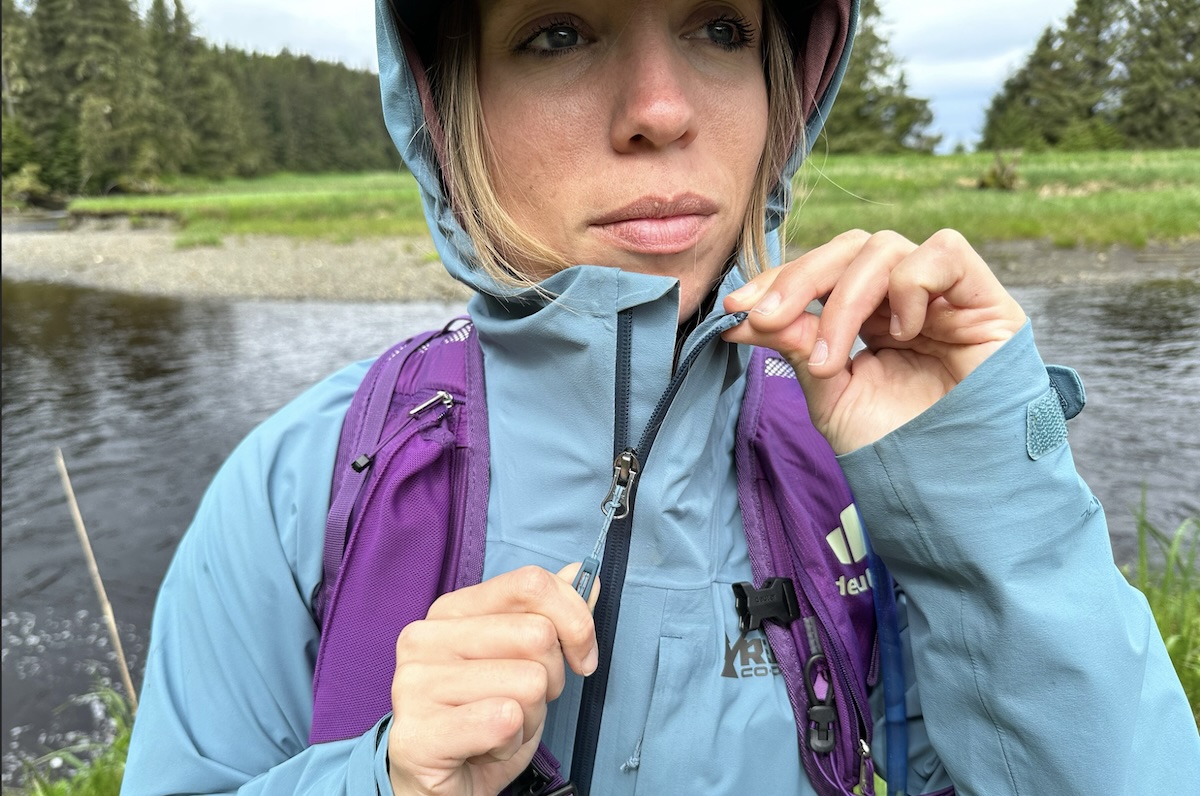
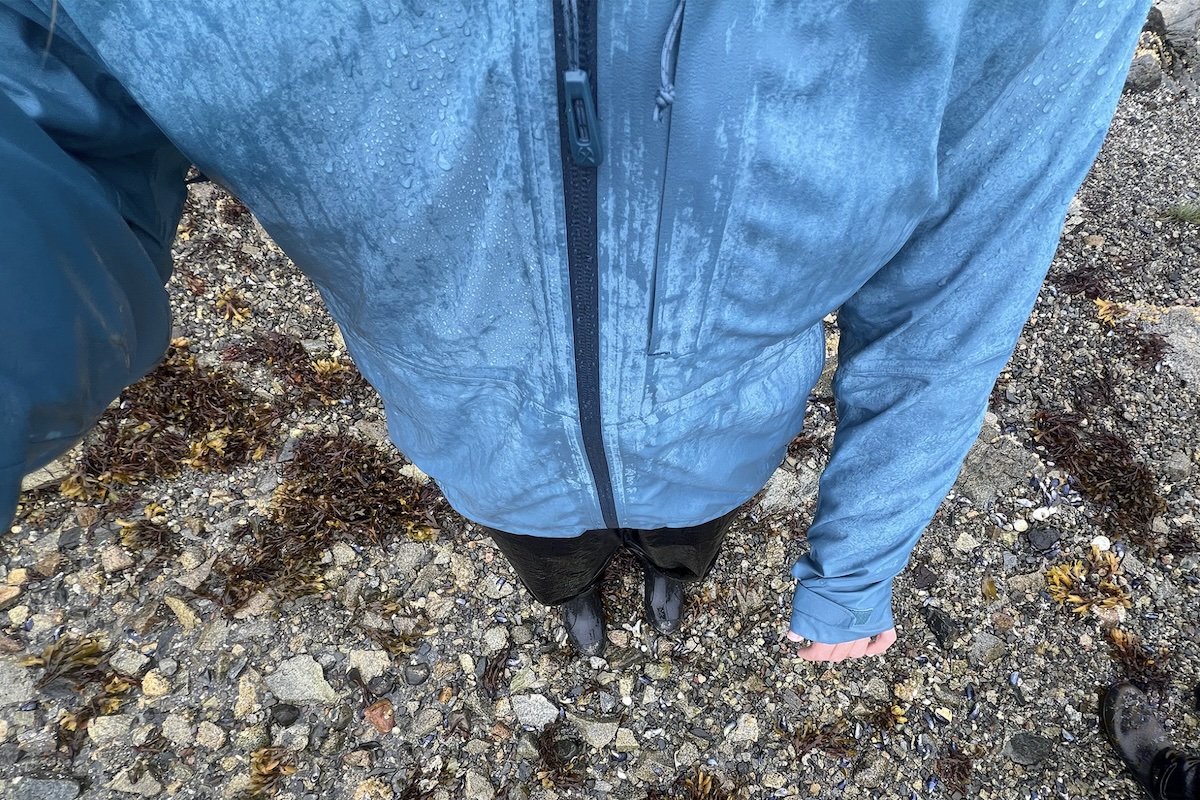
| Jacket | Price | Weight | Category | Waterproofing | Pit Zips? | Packable? |
|---|---|---|---|---|---|---|
| REI Co-op XeroCloud 3L | $189 | 11.3 oz. | Daily use/hiking | 3L HydroWall | Yes | Yes |
| REI Co-op Rainier | $100 | 9.9 oz. | Daily use/hiking | 2.5L HydroWall | Yes | Yes |
| Patagonia Torrentshell 3L | $179 | 12.4 oz. | Daily use/hiking | 3L H2No | Yes | Yes |
| Outdoor Research Aspire 3L | $249 | 12.4 oz | Daily use/hiking | AscentShell Dry | Yes | Yes |
The XeroCloud 3L stands out as a very solid value for the level of performance, but the rain jacket market is an increasingly competitive space. From within REI’s own lineup, you can save with the $100 Rainier, which features a downgraded 2.5-layer membrane (also HydroWall) but is lighter (9.9 oz.) and has an additional pocket (two hand pockets plus two internal drop-in pockets). The XeroCloud is the superior performance piece with a noticeably softer and more premium feel, but the Rainier is a nice budget choice for those looking to save.
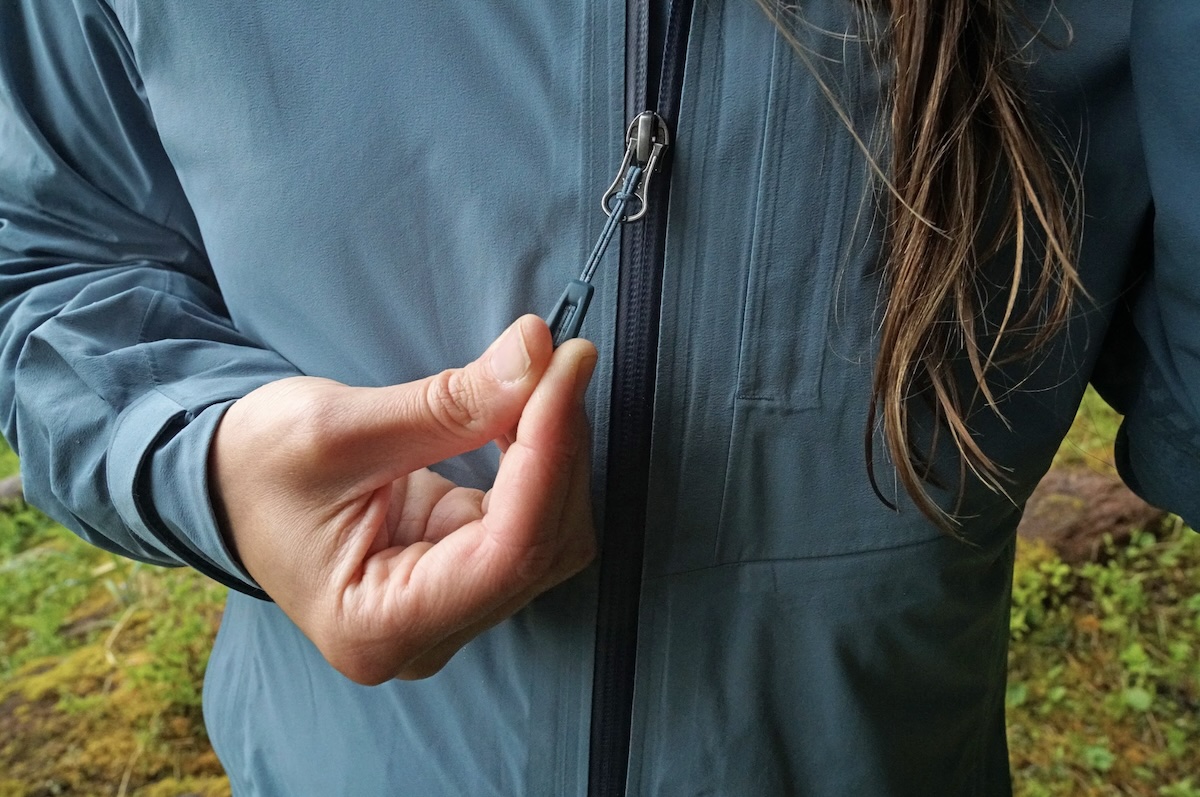
Moving up in price, the Patagonia Torrentshell 3L is a standout performer in the sub-$200 price range. For $10 less than the XeroCloud, the Torrentshell features a similarly protective 3-layer construction that utilizes Patagonia’s trusty H2No membrane. In parsing out the differences, the Patagonia uses a slightly thicker (50D) face fabric, which is a little more confidence-inspiring around sharp gear but results in a slight weight increase (12.4 oz.). The Torrentshell also has a stiffer and crinklier construction with no built-in stretch or jersey backer, and the storage layout is limited to just two hand pockets. In the end, it’s hard to beat Patagonia’s build quality and attention to detail, which gives the Torrentshell the slight edge for us, but the XeroCloud isn’t far behind and has some clear advantages.

Finally, Outdoor Research’s Aspire 3L will cost you $60 more than the XeroCloud but comes with some notable upgrades. First is OR’s TorsoFlo venting system, which extends from the bicep to the hem for class-leading ventilation. You also get reliable YKK zippers, a longer cut (by 0.75 in.), and availability in more sizes (from XXS to 4X) and colorways (eight for women at the time of publishing). The Aspire is pretty heavy at 13.9 ounces, but otherwise, it stacks up very closely to the XeroCloud with a soft and stretchy construction, three-pocket layout, and adjustability at the cuffs, hem, and hood. In the end, a final decision will likely come down to whether or not you can justify the added cost.
Back to the REI Co-op XeroCloud 3L Review See our Women's Rain Jackets Guide